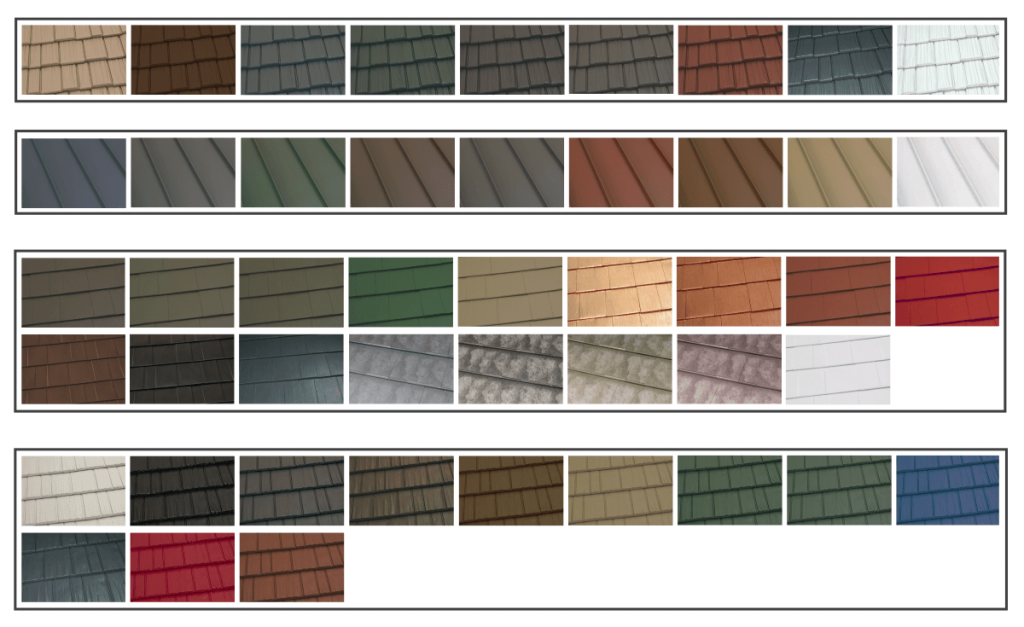The Benefits Far Outweigh Steel Roof Cost
Steel Roof Cost and Benefit. They say “strong as steel” for good reason.
Steel roof cost is an investment that’s far outweighed by its strength. There’s a reason they say “strong as steel”. Even Superman claimed the strength of steel. It’s what buildings and bridges are made of! Steel is economical versus other roofing materials. With advances in technologies, coatings, colors and styles, steel benefits and beauty far outweigh steel roof cost. Today’s investment-grade steel roof material is resistant to corrosion, and like aluminum, it will last for the life of your home.
Because of its strength, steel resists denting and scratching, unlike aluminum and copper. Our manufacturing partner, Isaiah Industries, uses a patented silicone-based coating which makes their steel roof materials even more scratch- and dent-resistant than steel is naturally. Your steel roof will stand up to even larger hail without denting, and you can walk on it without worry.
A steel roof will last 80-100 years. In 30-40 years, you may see rust around the edges, if they’re not concealed. Swita Metal Roofing relies only on professional, expert installation crews. When you cut steel you cut away your paint so you have an exposed edge. Swita Metal Roofing crews expertly hide all edges, so that the natural rust that can occur after decades is hidden from view. The same type of thing occurs with aluminum in the case of oxidation which can cause a blotchy, white haze over the surface of the material, or with copper in the case of patina that occurs. It is the nature of metals.
Our steel is 36% recycled. It’s investment-grade, domestic-born and -based metal, meaning it goes through the rigors of testing in America through the Metal Roofing Construction Association.
In terms of beauty, tremendous advances have been made over the past decade in steel roof coatings, colors, profiles and styles, making it not only the strongest and the most energy-efficient, but also the most beautiful option for your permanent custom roof.
Steel Roof Cost and Benefit Beats Aluminum and Copper.
Think of how easily you can crush an aluminum can. Steel is significantly stronger than aluminum or copper, two metals commonly used for metal roofing.
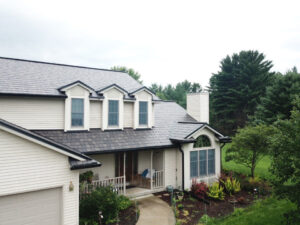 Aluminum and copper are lightweight. Aluminum is corrosion- and rust-resistant. Both aluminum and copper are highly malleable, and can be transformed into most roofing system profiles, such as shingle, tile, slate, seam, and shake. Like steel, aluminum often comes pre-painted for your convenience. On the other hand, copper is known for its natural finish which gets a beautiful patina over time.
Aluminum and copper are lightweight. Aluminum is corrosion- and rust-resistant. Both aluminum and copper are highly malleable, and can be transformed into most roofing system profiles, such as shingle, tile, slate, seam, and shake. Like steel, aluminum often comes pre-painted for your convenience. On the other hand, copper is known for its natural finish which gets a beautiful patina over time.
There is no doubt that aluminum and copper are both popular metals used for roofing applications, and we won’t argue with the fact that they’re both beautiful. Where steel wins over aluminum and copper is in its strength as well as its value. Steel is less expensive and far more durable than aluminum or copper.
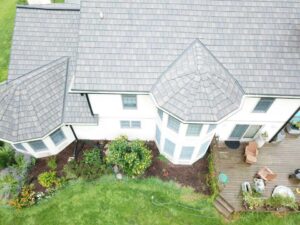 Our goal is to help as many Wisconsin homeowners as possible achieve the beauty, permanence and energy efficiency of metal roofing. And we’ve found that steel versus aluminum or copper is an economical choice that more homeowners and business owners can manage.
Our goal is to help as many Wisconsin homeowners as possible achieve the beauty, permanence and energy efficiency of metal roofing. And we’ve found that steel versus aluminum or copper is an economical choice that more homeowners and business owners can manage.
Many homeowners like aluminum’s 90 and 95% recycled content, most of which is post-consumer material. For example, a 100-square foot section of aluminum roofing can contain metal from over 1,000 recycled beverage cans. Unfortunately, that also is a comment on the strength you can expect from aluminum versus steel.
Steel Roof Cost and Benefit Outperforms Other Materials
Steel Roof Cost and Benefit Compared To Shake, Shingle, Tile, and Slate Profiles
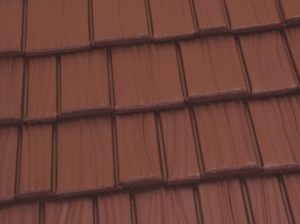 Most people don’t realize that they can achieve the look of shake, shingle, tile and slate with steel roofing. It’s not just the standing seam designs you may first think of when you think of metal roofing.
Most people don’t realize that they can achieve the look of shake, shingle, tile and slate with steel roofing. It’s not just the standing seam designs you may first think of when you think of metal roofing.
Standing seam profiles have always been a popular choice for commercial applications, but they’re somewhat lackluster on your home. The simplified commercial style gets the job done and will last a long time, but new metal roof profiles such as shake, shingle, tile, and slate provide other stylish options for your home. With these options, you will not only receive the long-lasting benefits of a metal roof, but you’ll also enjoy the timeless look of wood, tile, or slate.
Shake, shingle, tile, and slate are all considered “modular” panels, but they vary significantly when it comes to their look and application. Metal shakes are manufactured to look like hand-split cedar shakes. Many homeowners are instantly attracted to metal shakes because of the rustic, classic look it adds to their home. However, unlike wood, metal shakes aren’t susceptible to cracking, splitting, or rot. By opting for metal shakes, homeowners can easily extend the life of their roof by 60 years or more as opposed to traditional cedar.
Steel shingle panels are modular and come in a range of sizes — most commonly 2’ x 1’ or 4’ by 1’ — and they are usually installed in a staggered fashion to avoid the look of uniform vertical rows. Panels are secured to the roof deck with a nailing flange or hidden clip system. Shakes are generally more textured than shingles, giving the roof added dimension, meaning that it can often be installed right over the current roof.
For a more cohesive look, most metal shake systems will include all the necessary flashings pre-formed, which typically includes everything from sidewall flashing, ridge and hip caps, gable trim, eave starter, and valley. The flashings are often universal, which means they will work well with a range of roof pitches. Some of the more high-end metal shake options will include an open valley system, which is designed to keep debris like leaves, ice, moisture, etc. out of the valley.
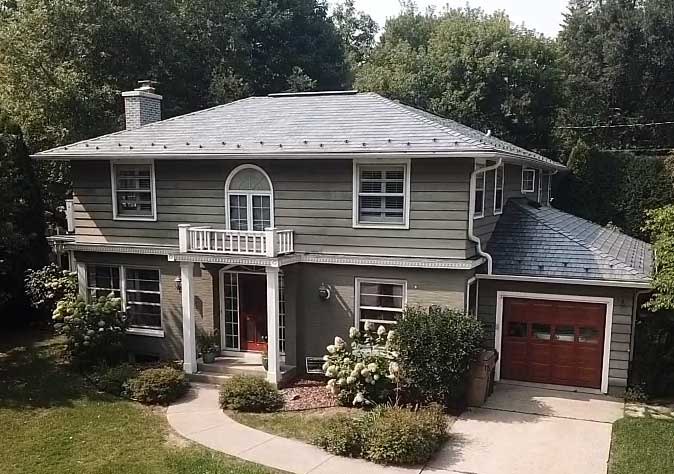
Standing Seam Steel Roofing Delivers Clean, Low-Maintenance Convenience and Strength
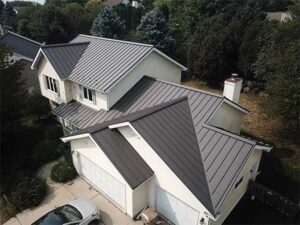 When people hear the term “metal roofing” they often first think of standing seam roofs. This profile is understated and simple, which makes it a great option for commercial applications, as well as barns, sheds, and the like. Some homeowners who want a clean look or have special architectural considerations prefer it as well. The most important thing to consider when opting for a standing seam profile is the size and the complexity of the roof. Most residential roofs have a more compact and more intricate profile, which makes standing seam steel roofing systems a little tricky. If you do choose standing seam for the home, a smaller panel width is best. Panel widths greater than 12” tend to look more commercial in nature.
When people hear the term “metal roofing” they often first think of standing seam roofs. This profile is understated and simple, which makes it a great option for commercial applications, as well as barns, sheds, and the like. Some homeowners who want a clean look or have special architectural considerations prefer it as well. The most important thing to consider when opting for a standing seam profile is the size and the complexity of the roof. Most residential roofs have a more compact and more intricate profile, which makes standing seam steel roofing systems a little tricky. If you do choose standing seam for the home, a smaller panel width is best. Panel widths greater than 12” tend to look more commercial in nature.
Most standing seam systems come with coordinating pre-formed flashings. They help with ease of installation, and they help ensure the roof remains water-resistant for decades. To ensure the flashings match the pitch of the roof exactly, they should be custom crafted for each project.
Steel Roofing Cost and Benefit: Benefits Include A Wide Range of Colors
